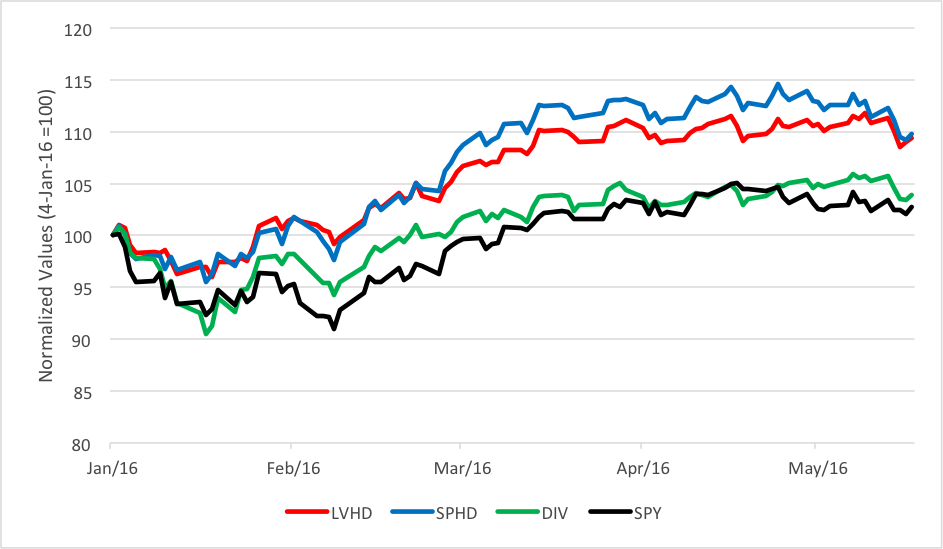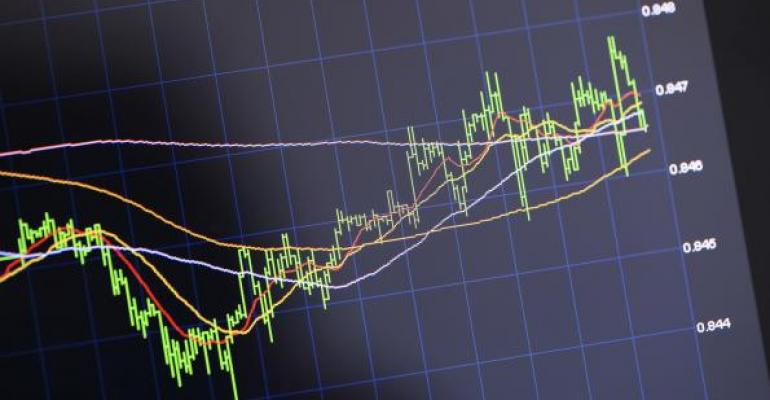We’re well into 2016 now and while it’s not yet time to start singing “Auld Lang Syne,” it’s worth checking on some of our previous assumptions and prognostications to see if we’re on track. Looking back at the ETF articles of late 2015 and early 2016, two themes stand out: income and volatility.
In February, our story “Low Volatility ETFs May Be 2016’s Best Bet,” surveyed the field of low-vol funds to identify the best and worst in each class.
That article followed on our November piece entitled “Shopping for High Dividend ETFs? Beware Volatility,” which highlighted three portfolios designed to deliver both high dividend income and low volatility — two already trading and one in registration but since launched.
All have delivered better-than-market total returns this year, though they took markedly different routes to snag them.

The PowerShares S&P 500 High Dividend Low Volatility ETF (NYSE Arca: SPHD) culls the S&P 500 Composite Index for its 50 highest-paying and least volatile components. The resulting portfolio produces a 3.03 percent dividend yield with a .80 beta. Year to date, SPHD’s earned a 9.78 percent total return.
By comparison, an ETF based on the parent S&P index, the SPDR S&P 500 Trust (NYSE Arca: SPY), pays a 2.08 percent dividend and has clocked a 2.75 total return this year.
The Global X SuperDividend US ETF (NYSE Arca: DIV), another 50-stock portfolio, taps into a wider universe to draw in MLPs (master limited partnerships) and REITs. The fund tracks SPY with a .71 beta on a total return basis, but is actually a lot more volatile when its 7.98 percent dividend is backed out. The fund’s total return is actually 3.90 percent year to date.
The newest fund, the Legg Mason Low Volatility High Dividend ETF (Nasdaq: LVHD) tracks 95 domestic stocks selected from across the market cap spectrum. The underlying index methodology selects and weights stocks on the basis of corporate profitability, low earnings volatility as well as high dividends and low price volatility.
Only one dividend has been paid since launch, making a yield forecast speculative; some of the fund’s component stocks hadn’t yet made distributions by the time LVHD’s March payout was made. Still, the new fund’s cranked out a healthy 9.38 percent total return so far with a low .51 beta.
Investors have obtained both income and price stability from these ETFs in 2016. Whether they’ll end up as the year’s best bets remains an open question. We’ll check back in December for another look.
Brad Zigler is REP./WealthManagement's Alternative Investments Editor. Previously, he was the head of Marketing, Research and Education for the Pacific Exchange's (now NYSE Arca) option market and the iShares complex of exchange traded funds.

